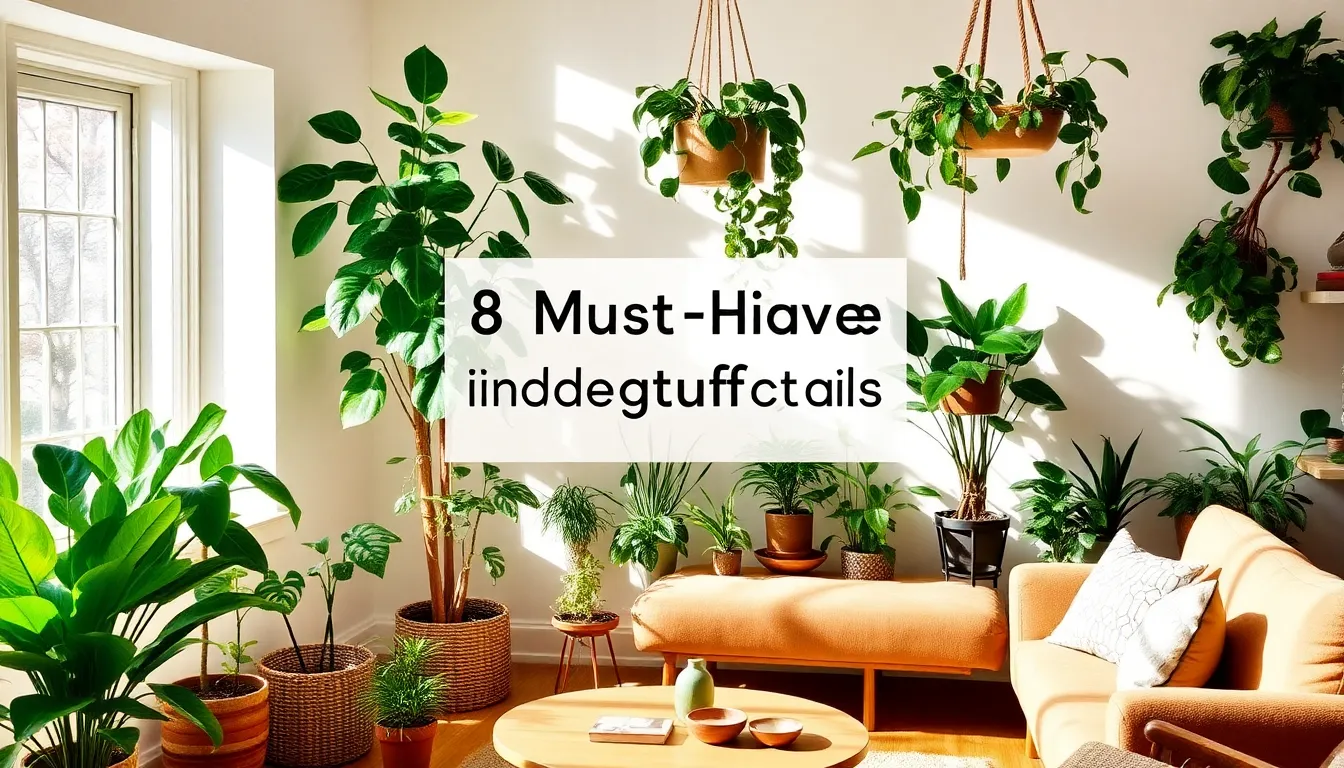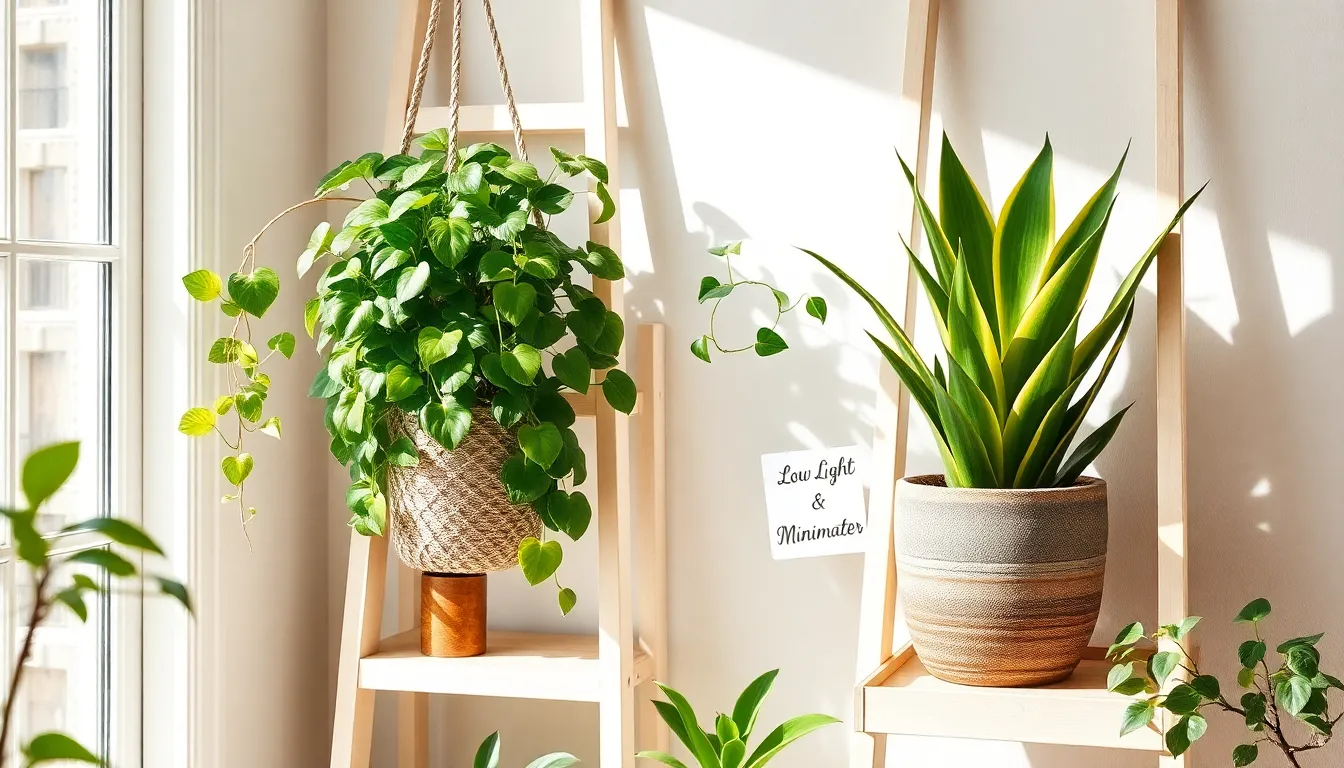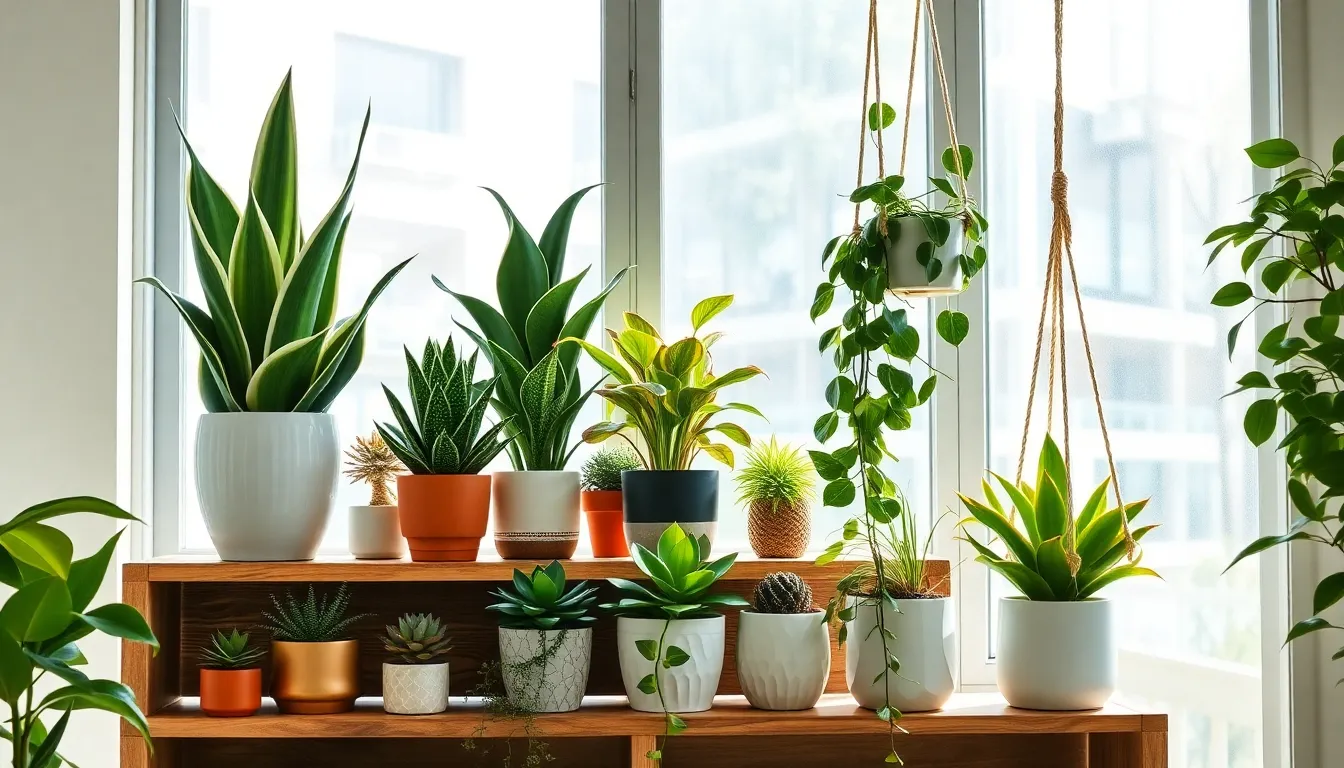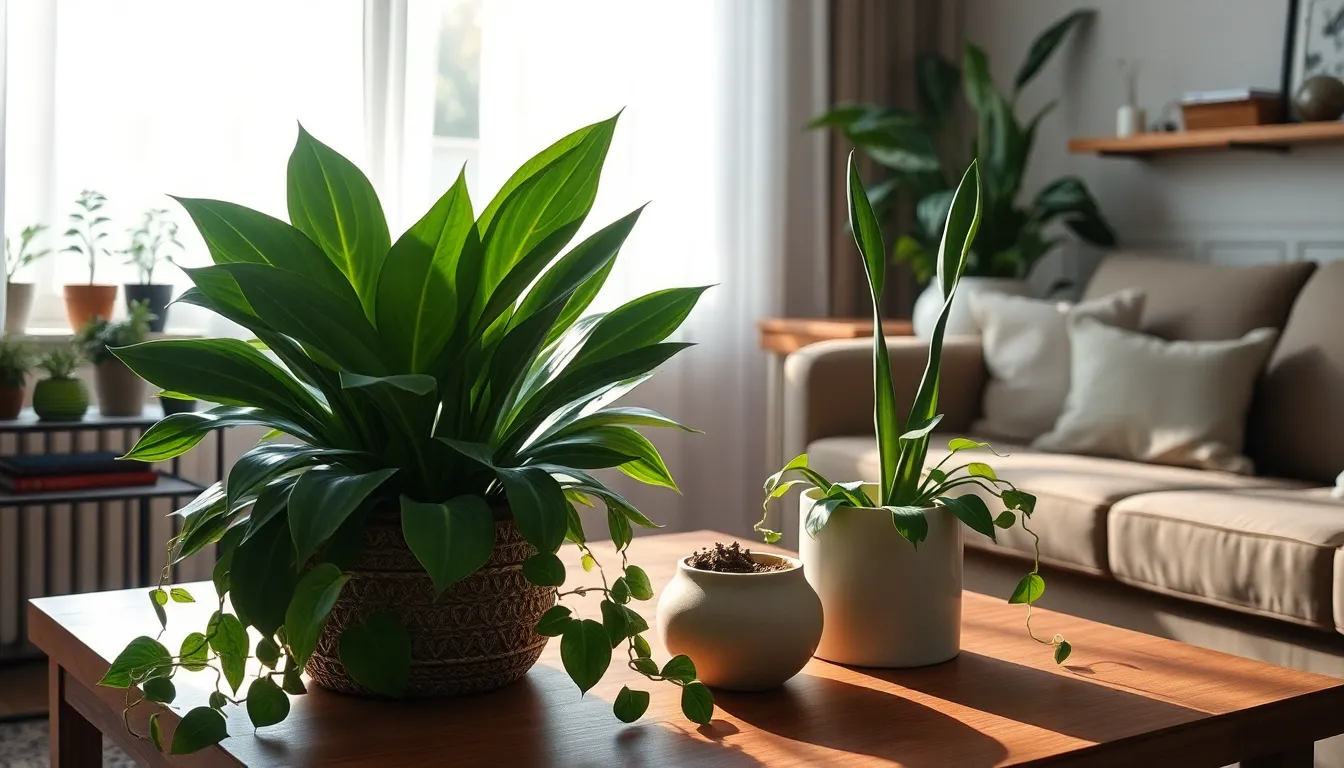Transforming your living room into a lush, green haven need not be a daunting task, whether you’re just starting your gardening journey or you’re a seasoned plant enthusiast. Indoor plants not only enhance the aesthetic appeal of your space, but they also offer a myriad of benefits, from purifying the air to boosting your mood and creativity.
In this article, we’ll introduce you to eight delightful indoor plants that will thrive in your living room, regardless of your experience level or the amount of natural light you have. Each plant will come with care tips and insights to help you nurture them with confidence, ensuring they flourish and bring joy to your home.
Whether you’re looking to add a pop of color, a touch of elegance, or a calming presence to your living room, we’ve got you covered. By the end of this article, you’ll have a curated list of must-have plants and the know-how to keep them thriving, making your living room the envy of every guest.
Top Benefits of Indoor Plants
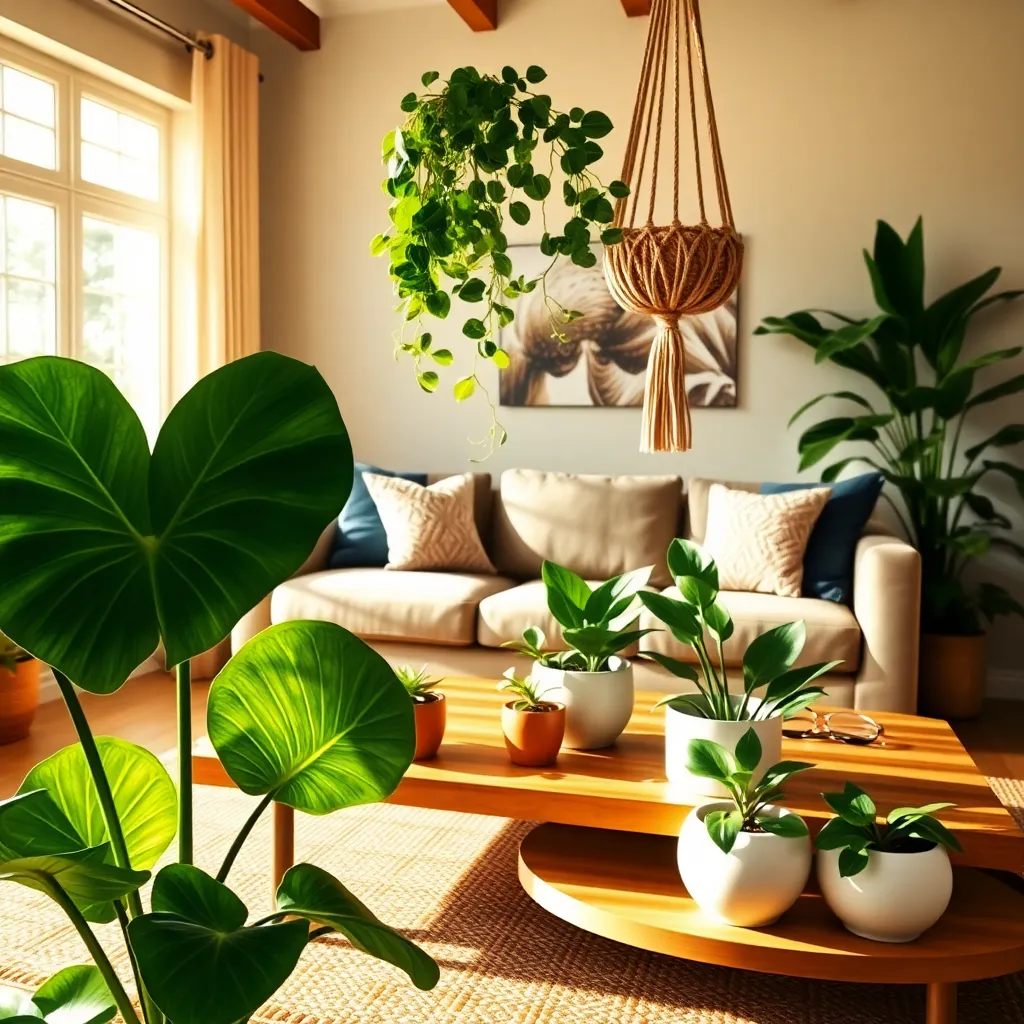
Indoor plants offer a multitude of benefits, making them a must-have for any living room. Not only do they enhance the aesthetic appeal of your home, but they also contribute to improved air quality by filtering out pollutants.
One of the most significant advantages is their ability to boost mood and productivity. Studies have shown that plants can reduce stress and create a calming atmosphere, perfect for relaxation or work-from-home environments.
Caring for indoor plants can also be a rewarding and therapeutic activity. For beginners, starting with hardy plants like the snake plant or pothos can provide a sense of accomplishment as these species are incredibly forgiving and thrive with minimal care.
Advanced gardeners might enjoy the challenge of growing more delicate plants, such as orchids, which require specific humidity levels and careful watering. Using a well-draining potting mix and ensuring indirect light can help these beautiful plants flourish.
Watering practices are crucial for indoor plant success; overwatering is a common mistake. A practical tip is to allow the top inch of soil to dry before rewatering, ensuring your plants receive just the right amount of moisture.
- Choose pots with drainage holes to prevent waterlogging.
- Consider using a pebble tray to maintain humidity for tropical plants.
- Rotate plants regularly to ensure even growth and prevent them from leaning towards the light.
Choosing Plants for Low Light
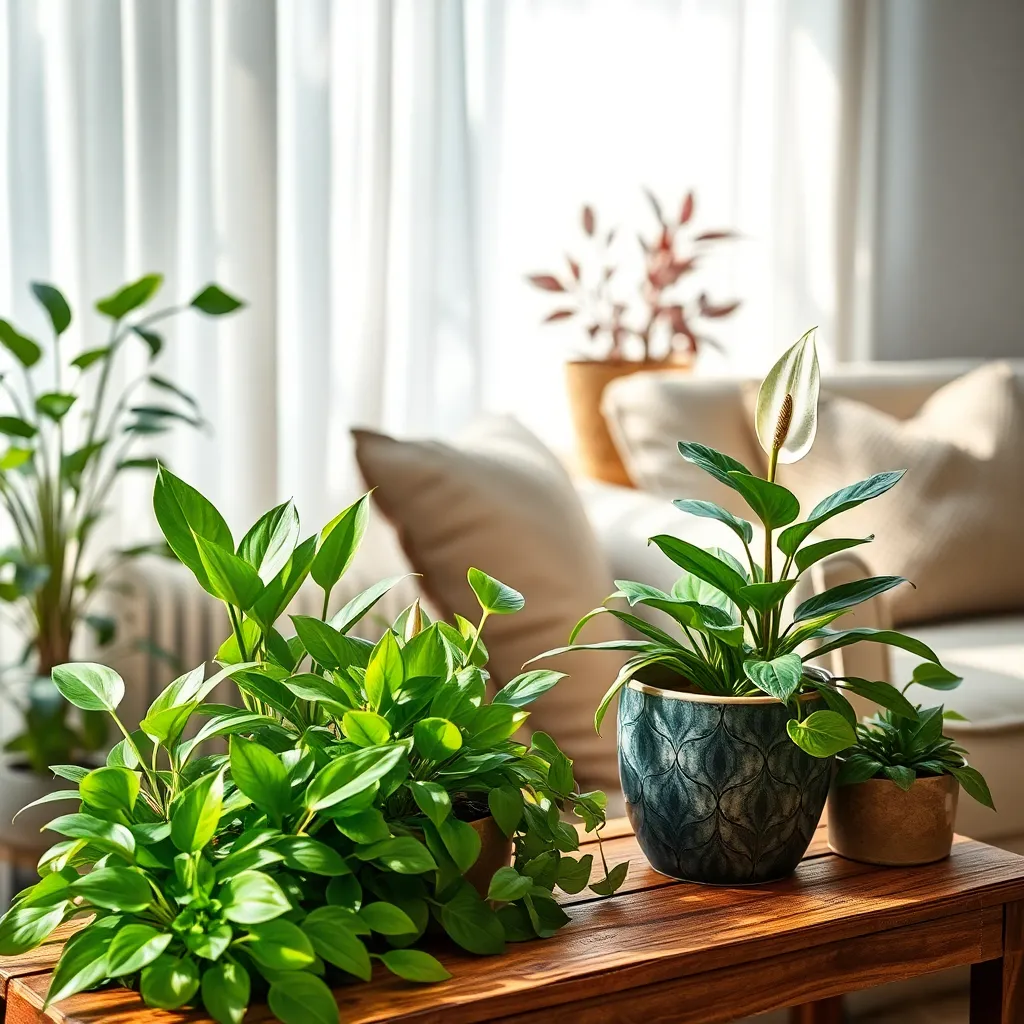
When choosing plants for low light, it’s crucial to select species that thrive in limited sunlight. Plants like the snake plant and ZZ plant are excellent choices as they are known for their ability to survive in dim conditions.
Another great option is the pothos, which can grow well in indirect light and is forgiving if you occasionally forget to water it. For beginners, starting with these resilient plants can build confidence and success in indoor gardening.
To ensure your low-light plants flourish, use a well-draining potting mix to prevent waterlogging, which can be detrimental in low-light environments. Water these plants only when the top inch of soil feels dry to the touch, typically every 1-2 weeks, depending on the humidity in your home.
Advanced gardeners might experiment with LED grow lights to supplement natural light, providing just enough illumination to promote healthy growth without overwhelming the plant. It’s a great way to maintain plant health during darker months or in rooms with little to no natural light.
Air-Purifying Plants You Need
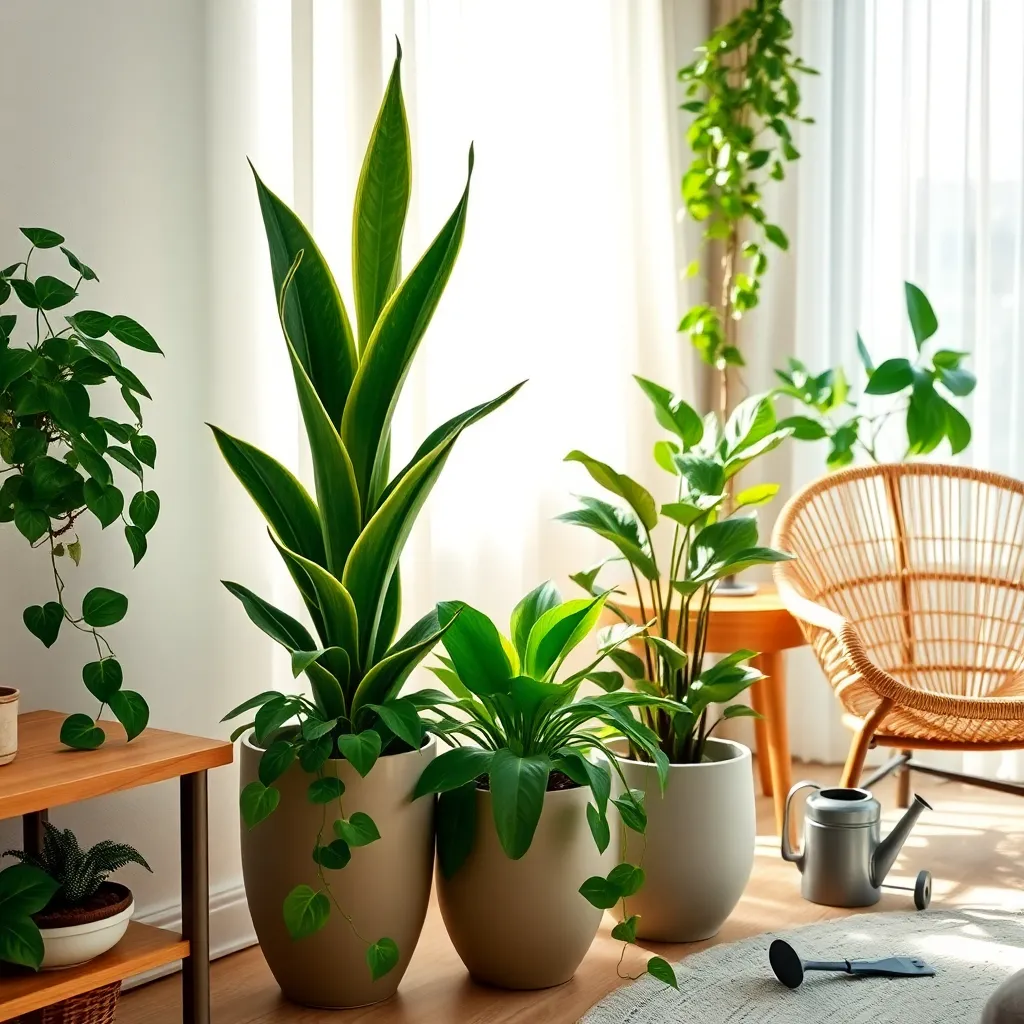
Bringing air-purifying plants into your living room is a fantastic way to improve indoor air quality while adding a touch of nature. One excellent choice is the Spider Plant, which is known for its ability to remove toxins like formaldehyde and xylene from the air.
To care for a Spider Plant, place it in a spot with indirect sunlight and water it well when the soil feels dry. Use a well-draining potting mix to prevent root rot, and consider repotting every couple of years to give it space to thrive.
Another air-purifying plant to consider is the Peace Lily, which thrives in low light and can filter out harmful pollutants such as ammonia and benzene. Make sure to keep the soil moist but not soggy, and mist the leaves regularly to maintain humidity.
For advanced gardeners, try the Boston Fern, which requires a bit more attention but rewards you with lush foliage and excellent air-purifying abilities. Keep it in a humid environment and water it consistently to keep the soil evenly moist, using distilled water if possible to avoid mineral buildup.
Easy-Care Greenery for Beginners
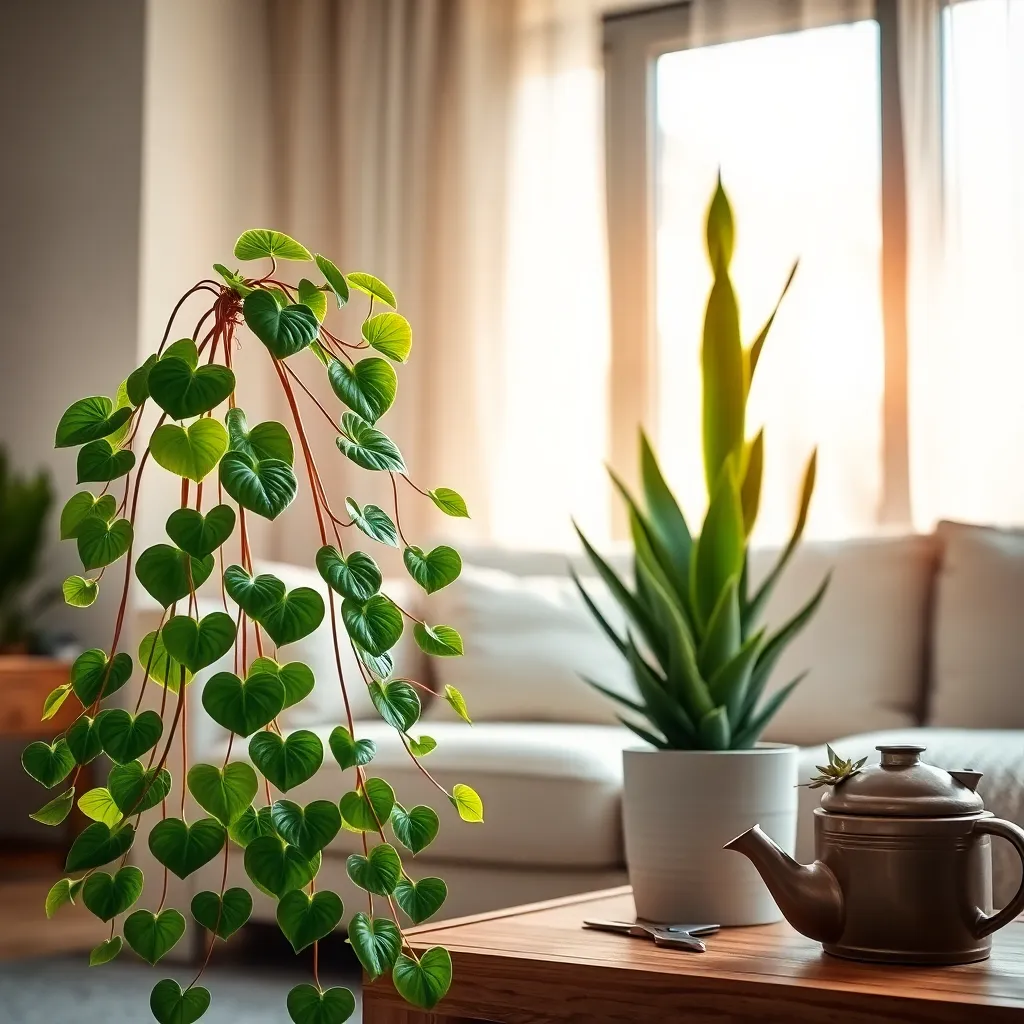
Starting with the Spider Plant is a great choice for beginners due to its resilience. It thrives in indirect sunlight and only needs watering when the top inch of soil feels dry, making it ideal for those with a busy lifestyle.
Another excellent option is the Pothos, which can adapt to various lighting conditions, from low light to bright, indirect light. Water it thoroughly but let the soil dry out between waterings to prevent root rot, ensuring it remains healthy.
Consider the ZZ Plant, known for its ability to survive in low light and with infrequent watering. Simply water it every two to three weeks, or when the soil is completely dry, making it a perfect plant for those new to gardening.
If you’re looking for something a bit more unique, the Snake Plant offers striking vertical leaves and requires minimal care. Place it in a spot with indirect light and water it about once a month, as it stores water in its leaves and tolerates neglect.
For a splash of color, try a Peace Lily, which features lush green leaves and white blooms. It prefers moderate to low light and should be watered weekly, with the soil kept consistently moist but not soggy.
Adding a Rubber Plant to your collection will bring elegance and easy care to your living space. It thrives in bright, indirect sunlight and should be watered when the top 1-2 inches of soil are dry, ensuring it remains vibrant and healthy.
To round out your selection, the Philodendron is a versatile plant that can thrive in low to bright, indirect light. Water it thoroughly when the top inch of soil is dry, and consider rotating the plant occasionally to promote even growth.
Maximizing Space with Vertical Plants
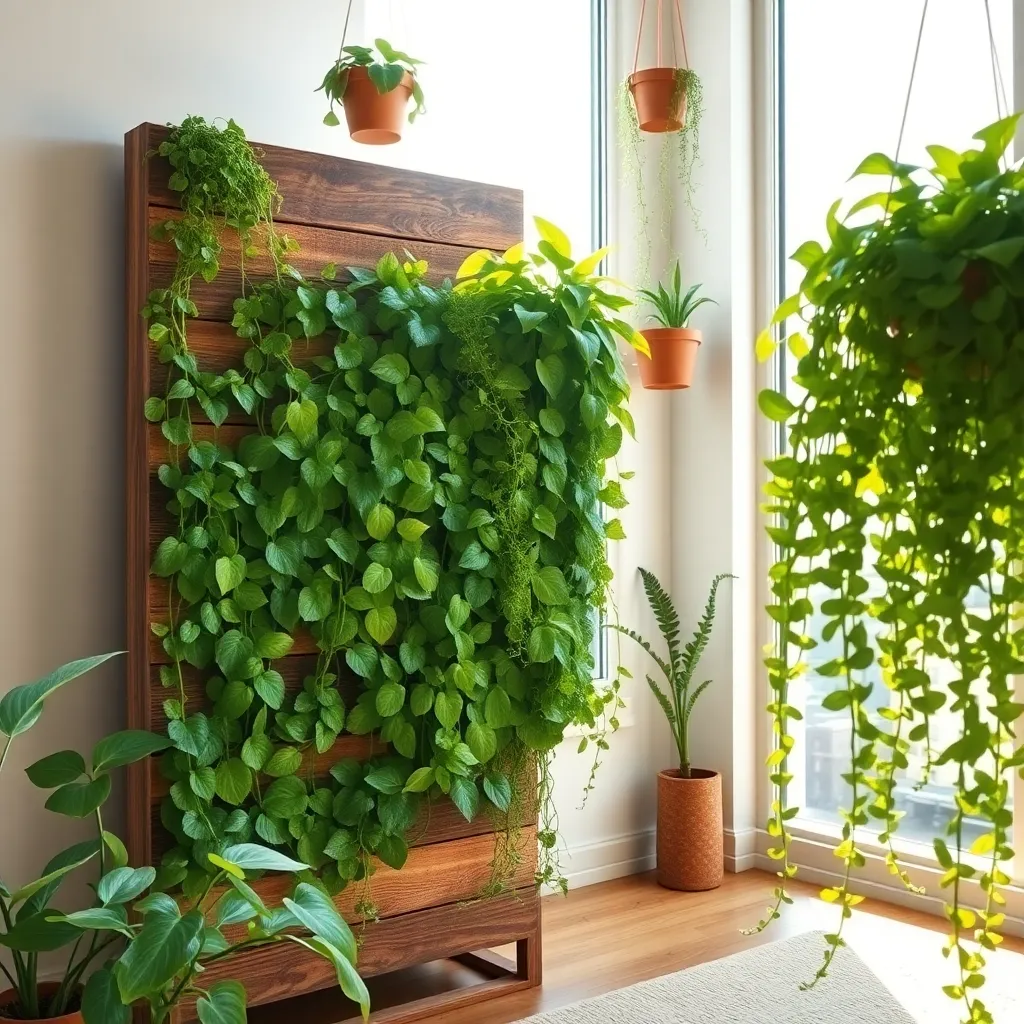
Maximizing space with vertical plants is a smart way to bring lush greenery into your living room without cluttering surfaces. By utilizing wall-mounted planters or vertical gardens, you can create a stunning display that draws the eye upward, making the room appear more spacious.
Plants like Philodendron and Pothos are ideal for vertical planting due to their trailing nature. Ensure they are positioned where they receive bright, indirect light, as direct sunlight can scorch their leaves.
For those looking to combine beauty with utility, consider growing herbs like basil or mint vertically. These plants thrive in well-draining potting soil and require regular watering, but make sure to let the top inch of soil dry out between waterings to prevent root rot.
Advanced gardeners might explore installing a DIY hydroponic wall garden, which can further optimize space and water use. This method keeps plants hydrated by circulating a nutrient-rich solution, allowing you to grow a variety of plants, including lettuce and strawberries, right in your living room.
Enhancing Aesthetics with Foliage
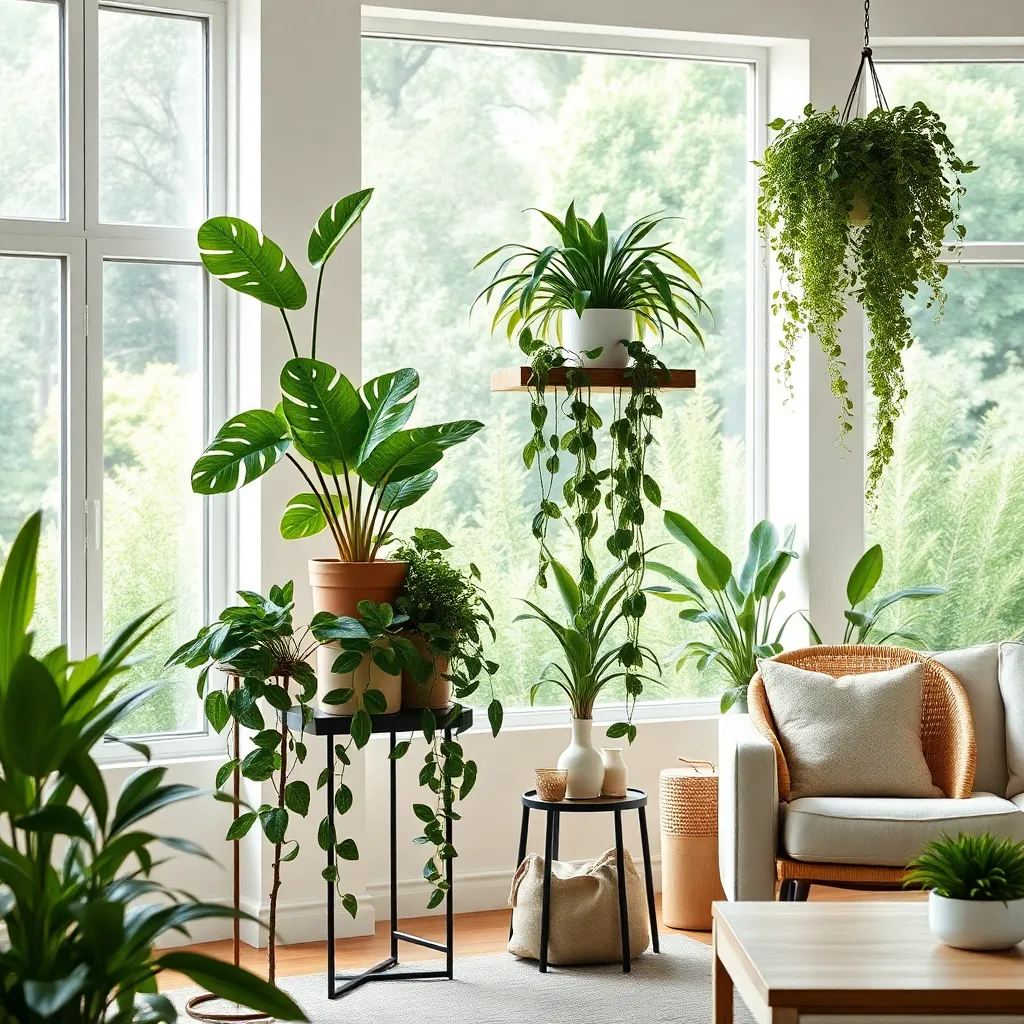
Integrating lush foliage into your living room can significantly enhance its aesthetic appeal. The rich greens and varied textures of foliage plants provide a natural, calming effect that complements any decor style.
Consider adding a Fiddle Leaf Fig to your space, known for its broad, glossy leaves. This plant thrives in bright, indirect light and requires watering when the top inch of soil feels dry.
For a more advanced touch, try incorporating a Monstera Deliciosa, famous for its striking split leaves. Ensure it has a well-draining soil mix and keep it slightly moist, allowing the topsoil to dry out between waterings.
Another excellent choice is the ZZ Plant, which is both low-maintenance and stylish with its waxy, oval leaves. It can tolerate lower light conditions and prefers infrequent watering, making it ideal for beginners.
Pet-Friendly Plant Options
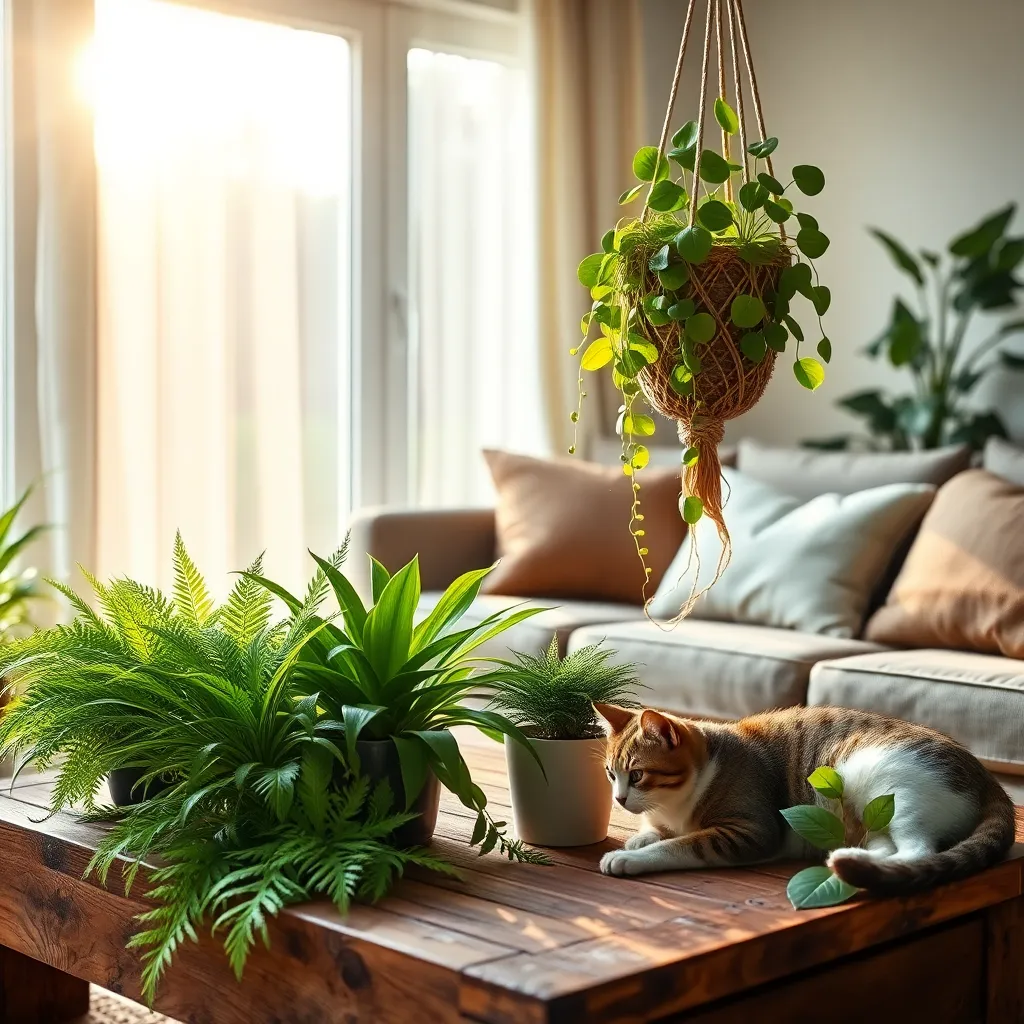
For those with furry friends, choosing the right plants is crucial to ensure a safe environment. Spider plants are a great option as they are non-toxic to pets and thrive in indirect sunlight, making them perfect for a living room setting.
Another excellent pet-friendly choice is the Boston fern, known for its lush foliage and easy care. Keep the soil consistently moist and provide a humid environment to maintain its vibrancy, especially during the dry winter months.
Areca palms add a tropical touch to your living room and are safe for both cats and dogs. These palms prefer bright, indirect light and need regular watering, but allow the top layer of soil to dry out between waterings to prevent root rot.
As a low-maintenance option, consider the Calathea plant, which is both visually striking and non-toxic to pets. Ensure it receives filtered light and water it with room temperature water when the top inch of soil feels dry to the touch.
Boosting Mood with Flowering Varieties
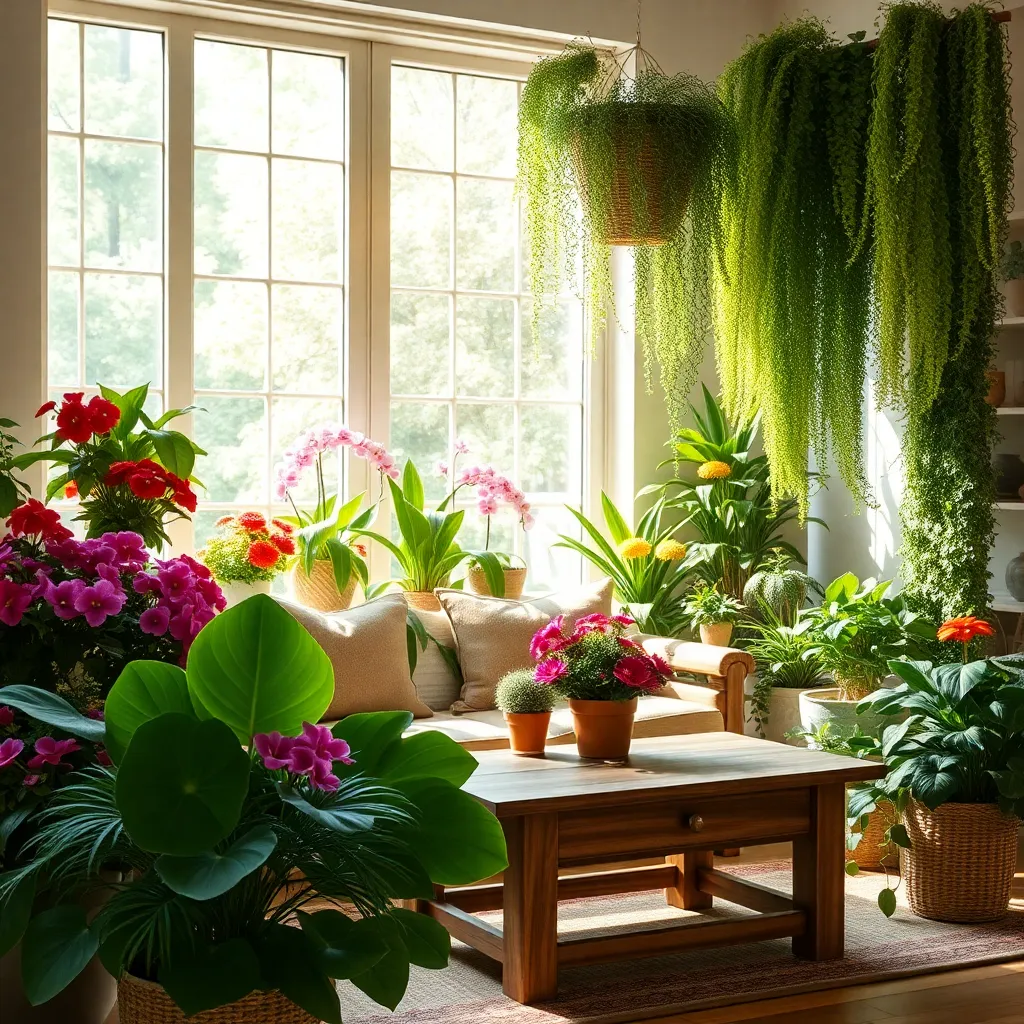
Bringing flowering plants into your living room can significantly enhance your mood and brighten your space. Not only do they add vibrant colors, but their blooms can also provide a calming effect, making your home a more pleasant place to unwind.
Consider the African Violet for an easy-to-care-for option that blooms year-round. Place it in indirect light and keep the soil consistently moist, but not waterlogged, to enjoy its continuous burst of color.
Orchids can also be a stunning addition, offering exotic beauty with minimal care requirements. Ensure they receive bright, indirect light and water them once a week, allowing the roots to dry slightly between waterings to prevent rot.
For those looking to add a touch of scent along with visual appeal, jasmine is an excellent choice. It thrives in bright sunlight and requires regular watering during the growing season, with a reduction in frequency during the winter months.
Conclusion: Growing Success with These Plants
Incorporating indoor plants like the versatile Snake Plant, the air-purifying Peace Lily, and the resilient ZZ Plant can be transformative for your living room and your relationships. These green companions not only enhance your space aesthetically but also foster a calming atmosphere that encourages open communication and emotional connection. The majestic Monstera and the ever-popular Pothos offer a lush backdrop for memorable moments, while the soothing Aloe Vera and vibrant Rubber Plant remind us of the beauty in growth and resilience. Lastly, the compact Spider Plant embodies adaptability, an essential trait in successful relationships.
Now, take the first step towards creating a nurturing environment by choosing one plant to introduce into your living space. Notice the subtle changes in your home’s ambiance and how it influences your interactions.
Remember, building a thriving relationship is much like nurturing a plant—it requires attention, patience, and care. Bookmark this article for easy access to these insights whenever you need a reminder of the nurturing power of nature in your relationships. Embrace these green allies as partners in your journey to relationship success, where each day offers a new opportunity to grow together.

